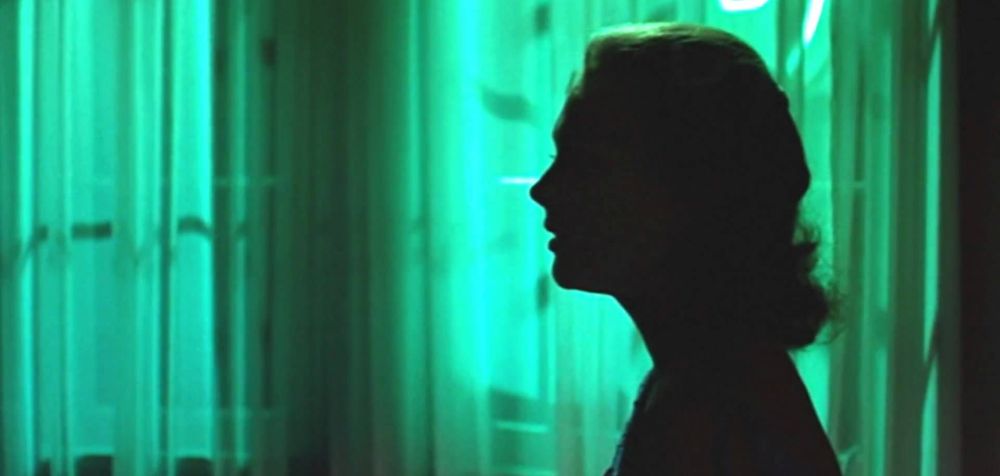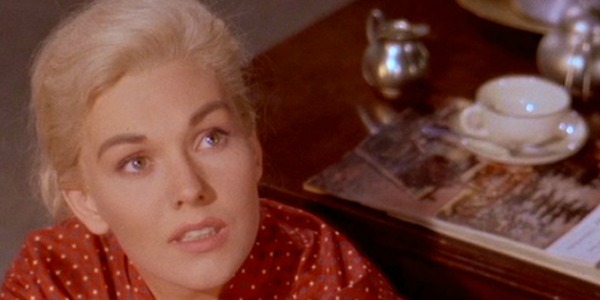Are All Classic Films Sexist?

Hi! I'm Georgia and my alter ego is Psycho Cinderella.…
Sexism in film has been a topic of discussion since the rise of feminism, and in particular, since Laura Mulvey’s 1970’s research into ‘the male gaze’ in cinema.
Fortunately, modern films are slowly but surely making a conscious effort to break down stereotypical gender roles and tired one-dimensional characters, but when it comes to the classics, many of the limited and restricted archetypes we try to move away from today are showcased in these films.
This year, Alfred Hitchc*ck’s mystery thriller Vertigo was voted the greatest film of all time by a BFI poll. The 1958 film does indeed showcase many great elements of cinema, from the directing, the clever symbolism and the interesting narrative that keeps the audience in a state of tension from start to finish. But there’s no denying that Vertigo also has aspects of sexism and misogyny, rooted in its characters, what they do, and how they act.
Vertigo: Representations of Femininity
From Vertigo’s opening title sequence, we are shown close-ups from a high angle on a woman’s rather frightened looking face, her eyes flicking worriedly from side to side. It seems immediately we have a symbol representing women as vertigo themselves, as something the audience must watch out for. Immediately the audience is subconsciously told to watch out for the female characters in this film, and that they perhaps should not be trusted.

Throughout the film, masculinity and femininity are represented in stereotypical and restrictive ways. Essentially, men represent sanity and women represent insanity, and throughout the film we follow Scottie’s (played by James Stewart) struggle to regain his sanity (or, his masculinity) which has been threatened by his obsessions with Madeleine and Judy.
Throughout the film, the female characters are portrayed as ‘unhinged’, unpredictable, helpless and confused about their own life. Madeleine is linked to the paranormal from the start, where her husband suspects she has been ‘possessed’ in some way by the ghost of her dead Grandmother. Historically, women have always been associated with the paranormal, temptation and forces of evil, originating from the biblical Adam and Eve story.
How women are physically portrayed in this film also reflects on the film’s sexist nature. Scottie sees Madeleine as an object and associates her fully through the image of her platinum blonde hair and grey suit. We again have close-ups on the swirl of Madeleine’s hair-do, once again portraying her as the symbol for Scottie’s vertigo, and subsequently, his insanity. Women are dangerous and a threat on men’s sanity, and are linked to the theme of fate in the film as if they are almost witch-like.
Once he meets Judy, (also played by Kim Novak) he becomes obsessed with forcing her to become exactly like Madeleine from her hair to her clothes, and therefore, exactly like his perfect woman.
Vertigo: Representations of Masculinity
Throughout Vertigo, men are represented as strong, powerful, level-headed and rational. Most, if not all, of their problems are somehow caused by women who pose a threat to their sanity. The women become puppets at the hands of men, and are passive and submissive compared to the powerful and in control male characters.

For Scottie to regain his sanity and subsequently cure his vertigo, Madeleine has to die. The female characters suffer the consequences of Scottie’s obsession over them and in turn, Scottie recovers his masculinity. The women are punished for leading Scottie astray and only through their death can his sanity be recovered.
Vertigo: The Character of Midge
Thankfully, not all of the female characters in the film are portrayed in such sexist ways as Madeleine and Judy are. Midge, who is Scottie’s friend and also perhaps his former lover, is portrayed as independent, creative and unmarried. She is sharp and humorous, and resists being controlled by Scottie and his every demand.
When he tells her to grab her hat before they leave, she replies “I don’t need a hat!” and also has connections to people who can provide Scottie with crucial information about Madeleine’s grandmother. Midge is the one who is doing the introducing, and is perhaps the film’s saving grace when it comes to the misogynistic representation of the other female characters.
Why Does It Matter If It’s Sexist If It’s A Classic?
Vertigo is a good film and that’s not just my opinion seeing as it’s been voted the greatest film of all time by almost two hundred film critics.
It’s thrilling, captivating, unique and slightly strange. It’s got beautiful cinematography, effective and interesting camera shots and showcases Hitchc*ck’s filmmaking at its finest. But we must acknowledge the archaic sexism that is so apparent throughout the film – no matter how great the film may be. In fact, I think it makes it even more important.
Classic Films That Aren’t Sexist?
Obviously, Vertigo is just one film and does not tell us if all classic films are inherently sexist. A film that subverts stereotypical female characters and ideas surrounding how a woman should act or feel is Roman Polanski’s 1965 thriller, Repulsion. The film follows Carol, played by Catherine Deveuve, who is repulsed and confused by men. She lives with her sister who is quite the opposite, she has a boyfriend and can sometimes be heard having sex with him through the walls of Carol’s bedroom.

Carol despises any symbol of masculinity left by her sister’s boyfriend, like his razor or even his toothbrush. Throughout the film we also see Carol quite confused by her work colleagues crying over men, and soon this confusion and disgust she feels around men turns to anger and fear.
Typically women were portrayed as men-obsessed in films. Women were portrayed as flirts and temptresses, and men were always topic of discussion between female characters. In Repulsion, Carol’s character is portrayed a complete opposite. She rejects the stereotypes, is not concerned with men, is not concerned with looking her best or being interested in beauty.
But because this is how everyone else is around her, it drives Carol to insanity. Though I’m not declaring this film a feminist masterpiece. because essentially Carol is insane…a trait, as previously seen, is commonly attributed to femininity and women.
Products Of Their Time
Of course, when classic films were being made, views and ideas on sexism and gender in general were much different to how it is now. Looking outside of the classic films can provide context and insight to how culture was at the time. Marilyn Monroe was known (and is still known) as a 50’s sex icon, she frequently starred in films playing stereotypical ‘dumb blondes’, ‘airheads’ and sexualised characters.

Monroe herself expressed feeling restricted by the characters she was being cast as, but ultimately found it hard to break free of the image that her previous roles created for her. The public also seemed to find it hard to separate Monroe from the characters she played on-screen, and the person in real life. Many classic films have characters we consider sexist and stereotypical today; in that time, it was much more accepted and rarely challenged.
Does it matter?
Like I said before, it’s extremely important that we acknowledge and look into the sexism in classic films, no matter how lauded they may be. To continue to progress and make positive changes in film today, we must understand the damaging stereotypes and characters that were being portrayed in their predecessors.
So, do you think classic films are inherently sexist? Are there any other classic films that you think break the mold or are surprisingly progressive for their time?
Does content like this matter to you?
Become a Member and support film journalism. Unlock access to all of Film Inquiry`s great articles. Join a community of like-minded readers who are passionate about cinema - get access to our private members Network, give back to independent filmmakers, and more.
Hi! I'm Georgia and my alter ego is Psycho Cinderella. I love to write scripts, poetry and fiction mostly of the psychological thriller genre...or at the very least, at least something containing dark or violent elements. Think Brett Easton Ellis meets Sylvia Plath... I love to watch, write and talk about film, analyse and explore different view points and learn more about film theory. My only real talent is obsessing...












